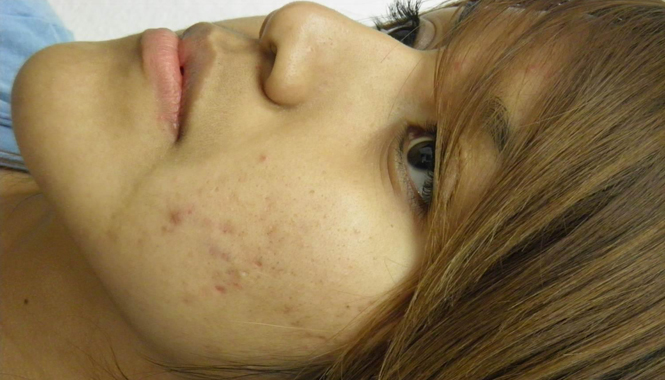

Laser scar removal therapy has only been used in the last few years. During treatment, the technician will use a laser to concentrate pulses of light on the scar tissue. The tissue is removed by the laser, allowing new, healthy skin to form. There are several different lasers, which treat scars and they vary in intensity, but they all operate in the same way – by resurfacing the skin to diminish the look of scars.
Your dermatologist or plastic surgeon will want to do an exam to evaluate your skin, as well as the scars to be removed, to decide the best laser for your skin type. Remember that the more severe the scarring, the stronger the laser that must be used, and that the risk of complications will increase. Your doctor will choose only the laser strength that is needed, and nothing stronger.
Before the procedure, your skin will be treated with a dual-purpose gel that soothes and cools the skin while at the same time applying a topical anesthetic. You will be given a pair of special shades that will protect your eyes from the laser, and the physician will begin the treatment. You will notice some discomfort; the skin may tingle, it may burn a little or sting, or you may feel as though a rubber band is being snapped against your skin. The laser will only be focused on the scar tissue.
While the laser is in operation, it focuses light pulses into the damaged skin. Remember, the laser will only be focused on the scar tissue itself – the healthy skin around the scars will remain untouched. Each treatment usually takes about 20 minutes, but if the scar is large or you have many small scars to be treated, the process can take a little longer. This is a process, so patients will also need more than one treatment.
The skin’s outer layer will be removed by the laser. This allows new, healthy skin to grow over the area that will make the scar appear smoother and more even. The process is similar to using sandpaper on a piece of rough wood, with the skin being resurfaced until it is smooth. The scar will begin to blend in with the healthy skin surrounding it, making it much less noticeable. Scar treatments can last from three to six treatments, but it is possible that your scar will need more treatments to diminish to the point that you are happy. Also, remember that not all scars can be removed completely with laser treatment, and they may only be diminished in appearance.
Benefits of Laser Scar Removal Therapy
If you are considering laser therapy for scar removal, you should know that for most patients, the scar does not completely go away – however, in the cases of thick keloid and hypertrophic scarring, the appearance of the scar is reduced and the skin’s surface is smoother. Not thus can only eliminate the nerve pain sometimes experienced with these scars, it can help a patient’s self-esteem dramatically. In most cases, insurance companies consider this treatment elective. It is almost never performed on teenagers or children as they are still growing and treatment will be less effective, if at all. For patients who are taking the acne medication Accutane, they will have to be off the medication for at least a year before laser scar removal can be performed as Accutane can cause additional scarring. Patients with skin conditions like psoriasis, dermatitis, and cystic acne should speak to their dermatologists, as they are usually not candidates for the procedure.
Patients with light complexions tend to have better results with laser removal. There are new lasers available, however, that are made for people with darker complexions to help them achieve good results with this procedure. Patients with darker complexions have an increased risk of developing hyperpigmentation (i.e. darkening of the skin) after treatment.
Most scars can be treated with lasers for removal. There are many types of scars, and the three most common – atrophic, hypertrophic, and keloid – all usually respond very well to laser therapy. Sunken scars, raised scars, and thick, discolored scars can all be minimized through laser removal.
As previously mentioned, in most cases, insurance will not pay for laser removal (incidents such as scars related to physical issues and illnesses or from accidents will sometimes be covered by insurance). Most often, the cost must be covered in full by the patient.
If you believe you will benefit from laser scar removal, schedule an appointment to speak with a board certified dermatologist or plastic surgeon that has at least several years of experience with laser therapy. The doctor will be able to evaluate your skin and help you come up with a treatment plan.











Leave a Reply
You must be logged in to post a comment.